
Hoodoo is a set of spiritual practices, traditions, and beliefs that were created by enslaved African Americans in the Southern United States from various traditional African spiritualities and elements of indigenous botanical knowledge. Practitioners of Hoodoo are called rootworkers, conjure doctors, conjure man or conjure woman, and root doctors. Regional synonyms for Hoodoo include rootwork and conjure. As a syncretic spiritual system, it also incorporates beliefs from Islam brought over by enslaved West African Muslims, and Spiritualism. Scholars define Hoodoo as a folk religion. It is a syncretic religion between two or more cultural religions, in this case being African indigenous spirituality and Abrahamic religion.
Marie Catherine Laveau was a Louisiana Creole practitioner of Voodoo, herbalist and midwife who was renowned in New Orleans. Her daughter, Marie Laveau II, also practiced rootwork, conjure, Native American and African spiritualism as well as Louisiana Voodoo and traditional Roman Catholicism. An alternate spelling of her name, Laveaux, is considered by historians to be from the original French spelling.
The Royal Pharmaceutical Society is the body responsible for the leadership and support of the pharmacy profession (pharmacists) within England, Scotland, and Wales. It was created along with the General Pharmaceutical Council (GPhC) in September 2010 when the previous Royal Pharmaceutical Society of Great Britain was split so that representative and regulatory functions of the pharmacy profession could be separated. Membership in the society is not a prerequisite for engaging in practice as a pharmacist within the United Kingdom. Its predecessor the Pharmaceutical Society of Great Britain was founded on 15 April 1841.

Marie Delphine Macarty or MacCarthy, more commonly known as Madame Blanque or, after her third marriage, as Madame LaLaurie, was a New Orleans socialite and serial killer who was believed to have tortured and murdered slaves in her household.
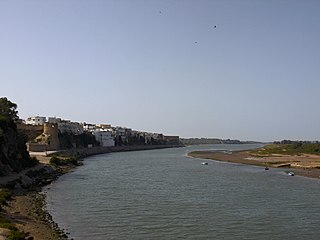
Azemmour or Azammur is a Moroccan city, lying at the Atlantic ocean coast, on the left bank of the Oum Er-Rbia River, 75 km southwest of Casablanca.

Taos Plaza is a center of shops and monuments within the Taos Downtown Historic District in Taos, New Mexico.
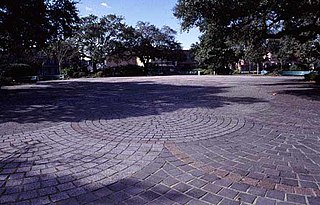
Congo Square is an open space, now within Louis Armstrong Park, which is located in the Tremé neighborhood of New Orleans, Louisiana, just across Rampart Street north of the French Quarter. The square is famous for its influence on the history of African American music, especially jazz.
Louis Martinié is an author, "internationally known" percussionist, practitioner of a multitude of religions among them being New Orleans style Voodoo, and co-author of the book New Orleans VooDoo Tarot (1992), with Sallie Ann Glassman.
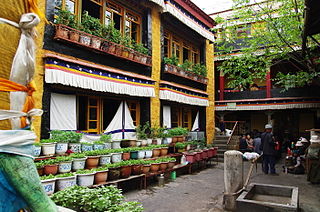
Ani Tsankhung Nunnery is a nunnery of the Gelug school of Tibetan Buddhism in the city of Lhasa, Tibet Autonomous Region, China. It was built in the 15th century on a site that had been used for meditation by the 7th century Tibetan king Songtsen Gampo. The nuns support themselves through alms and manufacturing items such as clothing and printed texts.

Yancy Derringer is an American action/adventure series that was broadcast on CBS from October 2, 1958, to September 24, 1959, with Jock Mahoney in the title role. It was broadcast from 8:30 to 9 p.m. Eastern Time on Thursdays.

The Voodoo Music + Arts Experience, commonly referred to as Voodoo or Voodoo Fest, was a multi-day music and arts festival held in City Park in New Orleans, Louisiana. First started in 1999, it was last held in October 2019, after being canceled in 2020 and 2021 due to the pandemic, and canceled in 2022 without explanation.
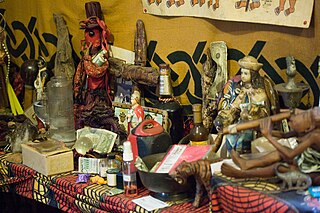
Louisiana Voodoo, also known as New Orleans Voodoo, is an African diasporic religion that originated in Louisiana. It arose through a process of syncretism between the traditional religions of West Africa, the Roman Catholic form of Christianity, and Haitian Vodou. No central authority is in control of Louisiana Voodoo, which is organized through autonomous groups.
Eyewitness Books is a series of educational nonfiction books. They were first published in Great Britain by Dorling Kindersley in 1988. The series now has over 160 titles on a variety of subjects, such as dinosaurs, Ancient Egypt, flags, chemistry, music, the solar system, film, and William Shakespeare. According to Dorling Kindersley, over 50 million copies have been sold in 36 languages.

Babington's tea room, established in 1893, is a traditional English tea shop at the foot of the Spanish Steps in the Piazza di Spagna in Rome, Italy.

The history of pharmacy as a modern and independent science dates back to the first third of the 19th century. Before then, pharmacy evolved from antiquity as part of medicine. The history of pharmacy coincides well with the history of medicine, but it's important that there is a distinction between the two topics. Pharmaceuticals is one of the most-researched fields in the academic industry, but the history surrounding that particular topic is sparse compared to the impact its made world-wide. Before the advent of pharmacists, there existed apothecaries that worked alongside priests and physicians in regard to patient care.
Bouley was a contemporary French restaurant located at 163 Duane Street, in Tribeca in Manhattan, in New York City. The high-profile four-star chef David Bouley was its owner and chef. It initially opened in 1987 at 154 Duane Street and was closed in 1996.

Jens Bang's House is a landmark in Aalborg, Denmark. Situated on Østerågade in Nytorv square, it was built in 1624 by Jens Bang in Dutch Renaissance style. Noted for its gables and sculpted auricular window décor, it is said to be the finest privately owned Renaissance building in the country. It also features gargoyles and a sculpture of Bang's face, tongue sticking out. The five-storey building has housed the city's oldest pharmacy for more than 300 years. It is privately owned.

The Lamb and Flag is a Grade II listed public house at Rose Street, Covent Garden, London, WC2.
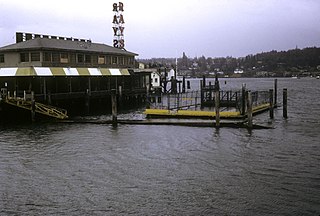
Ray's Boathouse is a restaurant in the Ballard neighborhood of Seattle, Washington, United States, located on Shilshole Bay along the Puget Sound shoreline. It is noted for its seafood and views of Puget Sound and the Olympic Mountains, and has been listed as one of the city's top restaurants alongside The Herbfarm.
Malvina Latour was an American Voodoo practitioner and disciple of Marie Laveau in New Orleans.















